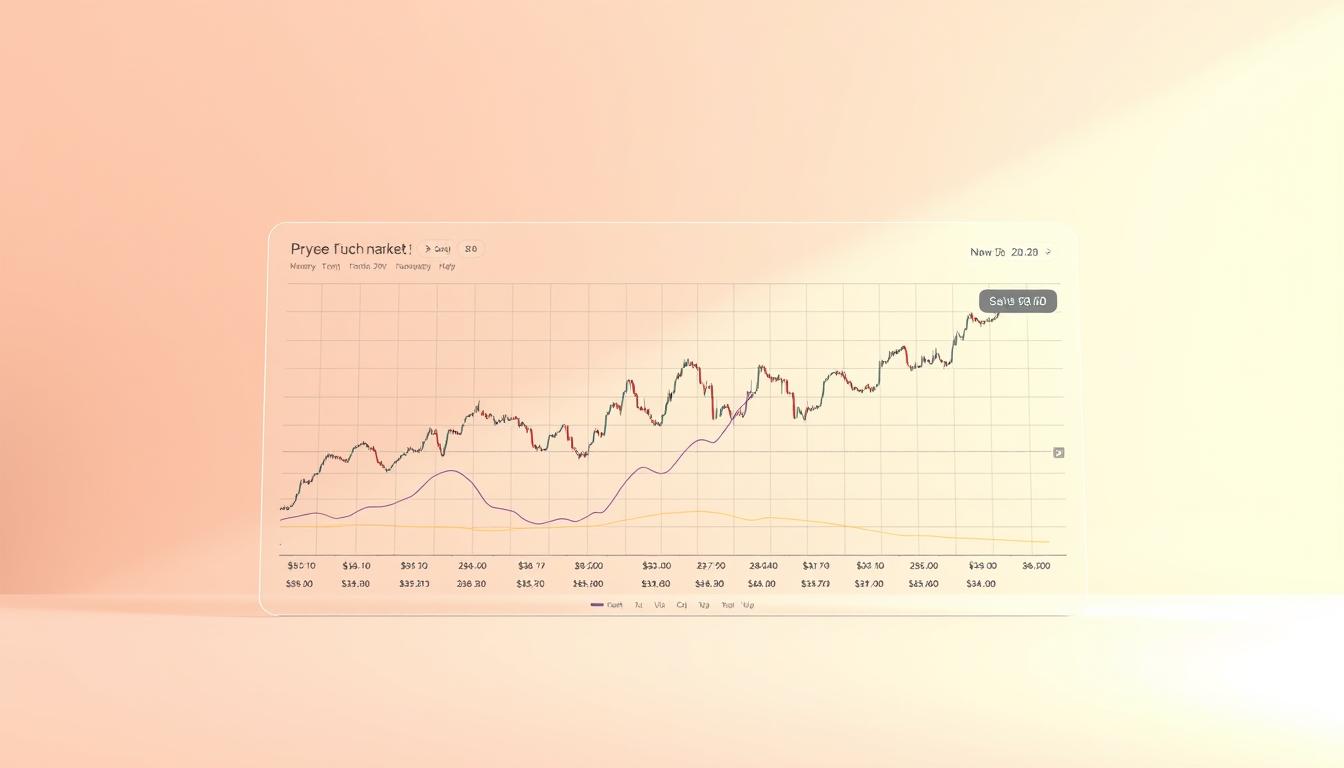Now Reading: Stay Informed with Cryptocurrency news market analysis updates
- 01
Stay Informed with Cryptocurrency news market analysis updates
Stay Informed with Cryptocurrency news market analysis updates

The world of digital assets moves at a breathtaking pace. New developments can shift the landscape overnight. Staying informed is no longer just helpful; it is essential for anyone involved in this space.
Accurate and timely crypto information is your most valuable tool. It helps you make smart choices in a volatile environment. Assets like bitcoin trade around the clock, influenced by global events.
This guide provides a clear path through the noise. We cover everything from price movements to new regulations and tech breakthroughs. Our goal is to offer insights for both newcomers and seasoned investors.
You will find a consolidated view of the most relevant latest crypto developments available today. This saves you time and helps you focus on what truly matters for your strategy.
Key Takeaways
- Timely information is critical for navigating the fast-moving digital asset world.
- Accurate data helps you make informed decisions and manage risk effectively.
- Major assets like Bitcoin operate 24/7, requiring constant awareness of global influences.
- This resource covers a wide range of topics, from technology to investment strategies.
- The content is designed to be valuable for both new and experienced participants.
- A consolidated news source filters essential information from the overwhelming volume available.
Crypto Market Overview: Trends & Data
Price action and trading volume offer a real-time snapshot of market dynamics. This section breaks down the essential data that paints a clear picture of the current crypto landscape.
Recent Price Shifts
Tracking price changes is the first step in any market evaluation. Major assets often move together, but individual catalysts create divergence.
For instance, the current bitcoin price trajectory can influence sentiment across all markets. We look at percentage gains and losses to identify strength or weakness.
This analysis helps distinguish between broad trends and asset-specific events.
Market Volume Trends
Volume data reveals the conviction behind price moves. High trading activity suggests strong belief in a new trend.
Conversely, low volume can signal a lack of consensus or thin liquidity. Comparing current levels to historical averages provides crucial context.
This data point is key for assessing the sustainability of any crypto move.
Major Breakthroughs in Bitcoin & Altcoins
Breakthrough advancements in protocol technology are creating new possibilities for bitcoin and alternative digital tokens. Development teams are achieving significant milestones that enhance functionality and expand use cases.
These innovations span multiple areas, from scaling solutions to security enhancements. The ecosystem continues to evolve rapidly.
Bitcoin’s Recent Innovations
Bitcoin development has accelerated with Layer 2 solutions gaining traction. These technologies address scalability while maintaining security. Smart contract capabilities are also expanding.
Recent analysis by Hongji Feng highlights challenges for btc in decentralized finance. Traditional finance collateral requirements may impact integration prospects. This reflects ongoing efforts to expand bitcoin beyond store-of-value functions.
Protocol upgrades and mining innovations enhance functionality. Infrastructure improvements strengthen security across the network. These developments often influence the bitcoin price as participants reassess long-term value.
Altcoin breakthroughs create competitive dynamics within the crypto space. New token innovations present both challenges and opportunities. Institutional perspectives on btc versus emerging assets influence investment flows.
Cryptocurrency news market analysis updates
Staying current with the fast-paced digital asset space requires filtering essential developments from daily noise. This section provides a consolidated review of the most impactful events shaping the landscape.
Our coverage spans regulatory shifts, security initiatives, and institutional movements. We connect individual items to broader trends for clearer insights.
Recent enforcement actions, like the FCA’s move against HTX in London, highlight increased regulatory scrutiny. This trend affects how projects promote themselves globally.
Security remains a top priority. Wallet providers MetaMask and Phantom are leading a collaborative defense against phishing scams. This follows significant ecosystem losses.
Institutional developments continue to shape the market’s structure. These include exchange acquisitions and new banking sector permissions for digital assets.
Adoption patterns show interesting divergence. South Asia leads in grassroots adoption, while the United States dominates by total transaction volume.
| Category | Development | Potential Impact |
|---|---|---|
| Regulation | FCA action against HTX | Tighter promotional rules |
| Security | MetaMask/Phantom alliance | Enhanced user protection |
| Institutional | Banking sector integration | Increased legitimacy |
| Adoption | South Asia growth surge | New user base expansion |
Data-driven perspectives are also emerging. AI platforms like Perplexity offer price forecasts for major assets, adding another layer to the analysis. This curated crypto news helps you focus on what truly matters.
Altcoins and Emerging Crypto Tokens
The digital asset ecosystem extends far beyond bitcoin, with a diverse universe of alternative tokens offering unique value propositions. This segment explores projects gaining momentum and technological traction.
Understanding these assets is crucial for a well-rounded investment strategies. They often present different risk and reward profiles compared to established leaders.

Ripple (XRP) Trends
XRP maintains a distinct position, focusing on cross-border payment solutions. Its potential hinges on bridging traditional finance and the digital asset world.
Recent regulatory clarity has been a significant factor for XRP. Partnerships with financial institutions continue to shape its adoption path.
Data-driven forecasts, like those from Perplexity AI, provide long-term price predictions for XRP through 2025. These models offer an additional perspective for evaluation.
Spotlight on New Crypto
The landscape for new crypto projects is constantly evolving. We assess which tokens bring genuine innovation to the table.
Many new entries compete with ETH, the leading smart contract platform. It’s vital to distinguish groundbreaking technology from simple replicas.
Evaluating a new token involves looking at its developer activity and real-world use cases. This new crypto space is where the next major cryptocurrency might emerge.
Institutional Investor Perspectives
Recent survey data reveals a growing consensus among professional investors about bitcoin’s long-term potential. Two-thirds maintain bullish positions as they develop their 2026 portfolio plans.
This confidence stems from several key developments driving institutional crypto adoption. Improved custody solutions now provide secure storage for large assets. Regulatory clarity continues to evolve, creating clearer frameworks.
Accessible investment vehicles like ETFs have opened doors for major institutions. These professional investors approach digital assets differently than retail participants.
Their strategies feature longer time horizons and larger capital allocations. Typical portfolio exposure ranges from 1-5% for bitcoin and other digital assets.
Some barriers still prevent full adoption. Regulatory uncertainty and infrastructure concerns remain challenges for certain institutions.
Hedge funds and corporate treasuries lead the adoption charge. Their demand brings stability to price dynamics, reducing overall volatility in the crypto space.
Regulatory Landscape and Global Impact
Regulatory decisions in major economies create ripple effects throughout the global crypto space. Different countries are taking varied approaches to digital asset oversight. These policies significantly influence where innovation concentrates and how users interact with the ecosystem.

US and International Policy Updates
The UK’s Financial Conduct Authority recently acted against HTX in London. This enforcement targeted illegal crypto promotions, signaling stricter compliance expectations. Such actions demonstrate active regulatory monitoring across borders.
Hong Kong’s Stock Exchange has tightened scrutiny on crypto hoarding vehicles. This affects how companies structure their digital asset holdings. The move reflects evolving institutional approaches to cryptocurrency storage.
Canada’s provincial governments are shutting doors on new crypto mining ventures. Environmental and energy concerns drive these local regulatory decisions. This demonstrates how sustainability factors influence policy development.
Japan’s Financial Services Agency may permit banks to buy, hold, and operate exchange services. These plans represent a potentially transformative shift toward traditional finance integration. Such regulatory clarity could significantly impact user access and market development.
The tension between protecting users and fostering innovation remains central to regulatory discussions. Policies that are too restrictive may push activity to less-regulated jurisdictions. Finding the right balance continues to challenge lawmakers worldwide.
Wall Street Movements and Market Data
The integration of Wall Street expertise into digital asset markets represents a significant evolution in financial infrastructure. Major banks and financial firms are bringing institutional-grade services to this space.
Traditional institutions now offer custody solutions, brokerage services, and dedicated research divisions. This professional involvement signals growing mainstream acceptance of digital assets.
Market data reveals substantial capital allocation from these Wall Street entities. The scale of participation continues to expand each quarter as more firms enter the space.
| Aspect | Institutional Participation | Retail Dominance |
|---|---|---|
| Minimum Investment | Typically $100,000+ | As low as $10 |
| Trading Volume | Growing rapidly | Historically dominant |
| Risk Management | Sophisticated protocols | Basic strategies |
| Time Horizon | Long-term focused | Short-term oriented |
Professional trading expertise improves liquidity and reduces price spreads. This benefits all participants through more efficient price discovery mechanisms.
Some investors question whether this institutional embrace conflicts with decentralization principles. However, most view it as validation of digital assets’ long-term potential.
Innovations in Blockchain Technology
Blockchain technology continues to evolve at a remarkable rate, introducing capabilities that extend far beyond basic digital transactions. These advancements create new possibilities for users and strengthen the entire ecosystem.

Layer 2 scaling solutions represent a major breakthrough. They dramatically increase transaction throughput while maintaining network security. This makes digital assets more practical for everyday use.
Privacy-enhancing technologies like zero-knowledge proofs offer confidentiality without sacrificing verification. Users can maintain privacy while still benefiting from blockchain transparency.
Interoperability protocols enable different networks to communicate and share data. This creates a more connected ecosystem rather than isolated systems. The technology improves trading infrastructure through faster settlement times.
Decentralized identity solutions give people control over personal information. They streamline access to services without compromising security. These innovations demonstrate the technology’s potential beyond the crypto space.
Applications in supply chain, healthcare, and voting validate the underlying innovation. They support broader adoption by showing real-world utility. The technology’s evolution continues to open new frontiers.
Trading Platforms and Binance Influence
Platform infrastructure plays a critical role in determining trading efficiency and user experience. Major exchanges continuously evolve their offerings to stay competitive in the dynamic digital asset space.
Binance’s Latest Platform Enhancements
Binance has rolled out significant upgrades to its trading interface and product lineup. These improvements include advanced order types and expanded derivative offerings.
The platform now provides more options for both beginner and experienced traders. Enhanced mobile applications make crypto trading accessible anywhere.
Recently, Binance finalized its Gopax acquisition after a two-year regulatory delay. This strategic move expands the exchange’s presence in the Korean market.
Such geographic expansion demonstrates Binance’s commitment to growth despite regulatory challenges. The exchange processes billions in daily trading volume, creating powerful network effects.
Security remains a top priority across all major platforms. Insurance funds and advanced protection measures help safeguard user assets.
Centralized exchanges like Binance balance convenience against decentralization principles. They offer liquidity that decentralized alternatives struggle to match.
Competitive dynamics drive innovation in fee structures and trading pairs. This benefits all participants in the crypto ecosystem.
Data-Driven Market Analysis: Prices, Volume & ETFs
Exchange-traded funds have transformed how traditional investors access digital assets. These instruments provide regulated exposure without direct ownership complexities. Quantitative data reveals crucial insights about overall ecosystem health.
ETF Trends & Stablecoin Metrics
ETF flows serve as powerful sentiment indicators. Inflows typically signal institutional confidence, while outflows may indicate profit-taking. This data helps gauge professional investor positioning.
Stablecoins demonstrate remarkable transaction scale. Payments reached $9 trillion in 2025, rivaling giants like PayPal and Visa. This volume shows real economic activity beyond speculation.
Price movement analysis examines support and resistance levels across timeframes. We identify trend strength and potential reversal points. Multiple data sources ensure comprehensive evaluation.
Correlations between ETF activity and stablecoins issuance influence market direction. These interconnected metrics provide a holistic view. Understanding these relationships enhances strategic decision-making.
Investors’ Strategies in a Dynamic Crypto Market
Investors face unique challenges in the digital asset space that demand specialized risk management techniques. Successful approaches balance long-term conviction with tactical flexibility.
Diversification spreads risk across multiple digital assets rather than concentrating in one position. This approach protects against individual token volatility while maintaining growth potential.
Dollar-cost averaging reduces timing risk through regular purchases. This strategy smooths entry prices over various bitcoin price levels.
| Strategy | Key Feature | Risk Level |
|---|---|---|
| Diversification | Spread across multiple assets | Medium |
| Dollar-Cost Averaging | Regular fixed investments | Low |
| Active Trading | Short-term position changes | High |
| Long-Term Holding | Multi-year investment horizon | Medium |
Risk management includes stop-loss orders and careful position sizing. These trading techniques protect capital during market downturns.
Security practices for asset storage are equally important. Choosing reputable platforms and understanding smart contract risks completes a comprehensive strategy.
Different investors require tailored approaches based on their goals. The dynamic crypto environment rewards those with disciplined plans.
Expert Research and Deep Dives
Academic and industry studies provide valuable insights that go far beyond surface-level market observations. This research examines fundamental questions about digital asset valuation and long-term potential.

On-chain data reveals patterns invisible in standard price charts. Wallet accumulation trends and network activity metrics offer unique perspectives on investor behavior.
Technical analysis explores consensus mechanism tradeoffs between proof-of-work and proof-of-stake systems. Each approach offers distinct security and efficiency characteristics.
Valuation research compares different models for assessing what bitcoin and other assets might be worth. These studies help investors make informed decisions based on fundamental factors.
Adoption curve studies compare current penetration rates to historical technology patterns. This crypto research projects potential future growth trajectories across different regions and demographics.
Experts examine competing theories about bitcoin’s role—whether as digital gold, inflation hedge, or speculative asset. Each perspective carries different implications for portfolio strategy and risk management.
Global Crypto Adoption and Regional Highlights
Around the world, diverse adoption trends highlight how various populations integrate digital assets into their financial lives. Different regions show unique patterns based on local economic conditions and regulatory environments.
Recent metrics reveal fascinating geographic disparities. Some areas experience rapid grassroots growth while others demonstrate institutional maturity.
South Asia’s Market Surge
South Asia leads the global adoption surge with remarkable momentum. Young populations and mobile connectivity drive this expansion.
Many users embrace digital assets to access financial services unavailable through traditional banking. Remittances and payments represent key use cases in this region.
US Market Dominance
The United States dominates by transaction volume despite slower user growth rates. Institutional activity and larger transaction sizes characterize this market.
Developed financial infrastructure supports sophisticated trading and investment strategies. Regulatory clarity continues to evolve, influencing adoption patterns.
| Region | Adoption Driver | Primary User Base | Transaction Size |
|---|---|---|---|
| South Asia | Remittances & Mobile Access | Grassroots Users | Small to Medium |
| United States | Institutional Investment | Professional Traders | Large |
| Europe | Regulatory Framework | Mixed Retail/Institutional | Medium to Large |
| Latin America | Inflation Hedging | Retail Investors | Small |
These regional differences demonstrate how economic development stages influence adoption. Cultural factors also shape whether populations view digital assets as complementary or competitive with traditional finance.
Crypto Scams, Security, and Phishing Defense
Wallet providers are joining forces to combat a rising tide of phishing attempts that have drained millions from unsuspecting holders. This collaborative approach represents a significant shift in how the industry addresses security challenges.
The recent security surge in fraudulent activities prompted major wallet developers to take coordinated action. After $400 million in losses affected the crypto community, the need for unified protection became clear.
MetaMask and Phantom Security Updates
These leading wallet services have implemented enhanced detection systems to protect users from sophisticated scams. The updates focus on identifying fake investment schemes and impersonation attacks.
Common threats include malicious smart contracts designed to trick people into sending money. Social engineering tactics exploit trust to bypass security measures.
Security plans now emphasize educational initiatives alongside technical protections. Staying informed through resources like our security alert service helps users avoid newest threats.
Unlike traditional banking, digital asset transactions cannot be reversed once completed. This irreversible nature makes preventive security absolutely essential for protecting your holdings.
Latest News from Crypto Regulatory Actions
Legal enforcement cases establish critical precedents that guide the development of crypto businesses globally. Recent regulatory news highlights both enforcement actions and high-profile adoption stories.
FCA Actions and Legal Implications
The UK’s Financial Conduct Authority took action against HTX in London for illegal promotions. This demonstrates active monitoring of marketing practices in the crypto space.
These enforcement actions create legal implications beyond the targeted companies. They establish precedents influencing how other businesses structure operations.
High-profile ventures like the Trump family’s projects generated $1 billion in pre-tax gains. Such success attracts regulatory scrutiny regarding assets classification.
Different jurisdictions take varied approaches to regulation. This creates both opportunities and compliance challenges for international traders.
Legal implications for traders include understanding reporting requirements for gains. Tax treatment and record-keeping obligations require careful attention.
Regulatory actions significantly influence which platforms gain legitimacy. Approval or enforcement signals guide capital flows throughout the ecosystem.
Conclusion
The journey through crypto‘s complexities reveals both challenges and opportunities for forward-thinking participants. Staying informed remains essential as developments can impact the bitcoin price and broader valuations any given month.
The future of cryptocurrency continues to spark debate. Will BTC function as digital gold, or will ETH and other tokens redefine how we use money? Only time will tell.
Successful traders understand that continuous learning is non-negotiable. This comprehensive guide has covered everything from security to strategy, providing valuable knowledge for today‘s environment.
Looking ahead, the coming months will likely bring both volatility and progress. Approach digital assets with optimism about their future potential while managing risks to protect your gains.
FAQ
How can I stay updated on the latest crypto trends and data?
To stay informed, follow reliable sources that provide daily updates on price shifts, trading volume, and new token launches. Platforms like Binance offer real-time data and research that are crucial for understanding current market dynamics.
What are the current major breakthroughs in Bitcoin?
Recent innovations for Bitcoin include developments around spot Bitcoin ETFs and technological upgrades that improve network efficiency. These advancements often influence the broader digital asset space and attract significant attention from Wall Street.
Which altcoins are gaining traction right now?
Assets like XRP often see activity based on legal and regulatory news. Meanwhile, new crypto tokens emerge regularly, with their potential for gains drawing interest from traders and investors looking for the next big opportunity.
How are institutional investors impacting the crypto space?
Institutional money is increasingly flowing into digital assets through vehicles like ETFs. This involvement brings more stability and can lead to substantial price movements, shaping the future of the entire market.
What is the current regulatory landscape for crypto?
Regulations are evolving globally. In the US, policy updates from agencies like the SEC, along with international actions from bodies like the UK’s FCA, create a complex environment that directly affects trading, stablecoins, and overall market access.
How important is security when dealing with cryptocurrencies?
Security is paramount. Always use trusted wallets like MetaMask and Phantom, and be vigilant against phishing scams. Protecting your assets should be a top priority, as the irreversible nature of transactions means lost funds are often unrecoverable.
What role do trading platforms like Binance play?
Major exchanges are central to the ecosystem. They provide liquidity, enable access to a wide range of tokens, and their platform enhancements directly influence how users trade and manage their money, impacting volume and price discovery.














